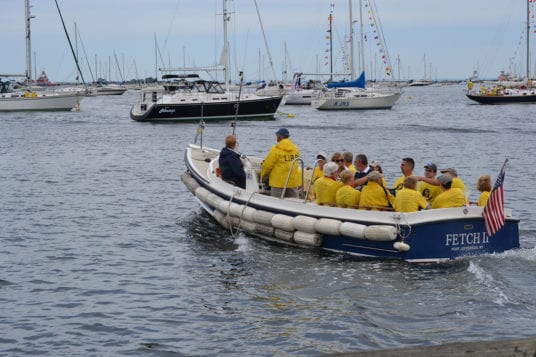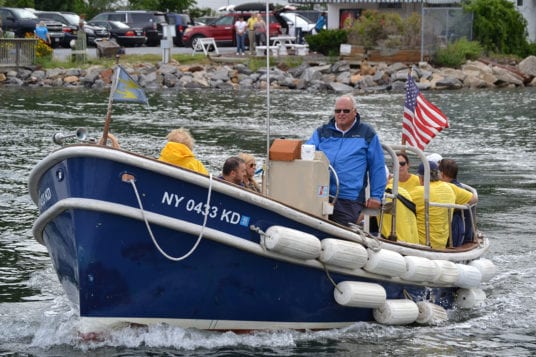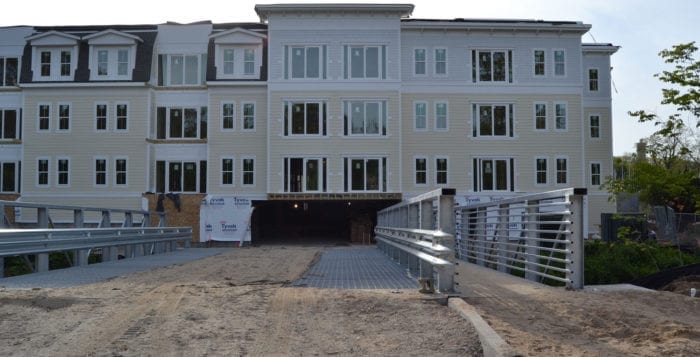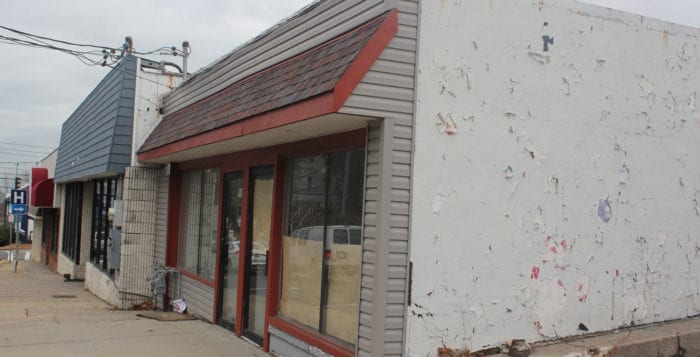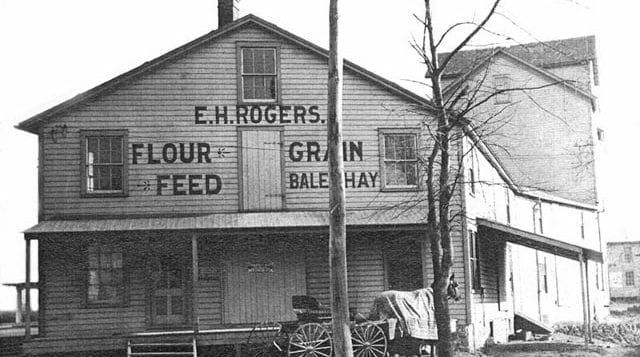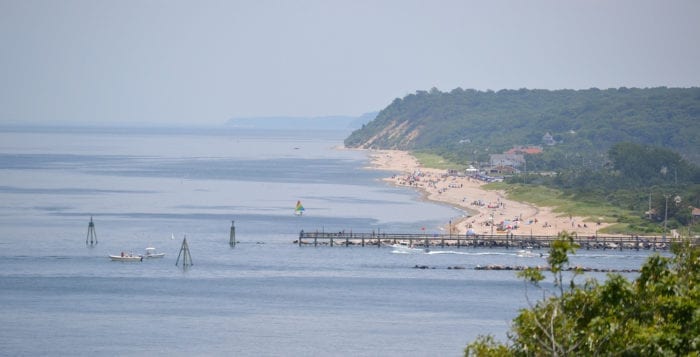By Alex Petroski
Another player has emerged to complicate the legal battle with Brookhaven Town and Port Jefferson Village in one corner and the Long Island Power Authority in the other.
Representatives from Caithness Energy LLC, an independent, privately held power producer with a Yaphank plant, went before Brookhaven’s board June 26 requesting permission to construct a 600-megawatt plant, which would be called Caithness Long Island II. This is not the first time, as the power company originally approached the town with plans for a power station in 2014.
“Caithness is seeking an amendment to the covenant and restrictions so it can utilize cleaner, more efficient equipment that recently became available,” said Michael Murphy during the June 26 hearing, an attorney representing Caithness.
“The new equipment has rapid response capability, thereby creating critical support for intermittent renewable energy resources.”
— Michael Murphy
In 2014, Caithness Energy had plans approved by the Brookhaven Town to construct a new 750-megawatt plant in Yaphank powered by two gas-powered turbines and a steam generator. Both Supervisor Ed Romaine (R) and Councilwoman Valerie Cartright (D-Port Jefferson Station) voted against the 2014 proposal, though it passed 5-2.
The project has been on hold ever since as energy demands on Long Island are projected to decrease, according to recent annual reports from PSEG Long Island. Then, New York Gov. Andrew Cuomo (D) mandated in August 2016 that 50 percent of New York’s electricity needs come from renewable energy sources by the year 2030.
The 600-megawatt power plant would be constructed on 81 acres of vacant land zoned for the use based on the 2014 approval. The proposal has several differences from the 2014 plans in addition to the reduced energy output including a reduction from two exhaust stacks to one; use of newer, more efficient technology; and a reduction from two steam turbines to one.
“It creates a platform for renewable energy,” Murphy said. “The new equipment has rapid response capability, thereby creating critical support for intermittent renewable energy resources. So, this facility will not compete, in essence, with solar and wind.”
The request comes as Port Jefferson Village and the town have said a settlement is nearing in an eight-year-long legal fight with LIPA over the utility company’s contention its Port Jeff plant’s property taxes are over assessed based on its decreasing energy demand. The settlement would smooth the impact of a potential substantial loss of revenue for the village, Port Jefferson School District, Port Jefferson Free Library and Port Jefferson Fire Department based on a reduced assessment of the plant. It would also prevent the village from being held liable for years of back pay should it have chosen to play out the legal battle in court and lost rather than settling the case. The village has argued a way to make good with LIPA over its decreasingly needed plant could be to increase its output capacity. If approved, the Caithness II plant would theoretically kill plans to repower the Port Jefferson plant.
However, according to Caithness President Ross Ain, LIPA has made no commitment to purchase power from the company should a second facility be constructed in Yaphank. It does purchase power from the first Caithness plant, with a 350-megawatt natural gas fire power generating facility operating in Yaphank since 2009.
The public hearing drew comments from those in favor of the proposal, many of whom being Longwood school district residents who would likely see a reduction in property taxes, similar to what Port Jeff residents enjoy currently for housing the Port Jefferson Power Station.
“There is no denying that these [revenue] reductions will cause significant hardships to all segments of our community, which is also your community.”
— Margot Garant
Environmental groups and other residents opposed the plan, as did Port Jefferson Village Mayor Margot Garant and state Assemblyman Steve Englebright (D-Setauket) each submitted statements to be read into the record by Cartright against the proposal and urging the board to vote it down. Garant has taken to social media to urge Port Jeff residents to submit written comments to the town on the proposal.
“There is no denying that these [revenue] reductions will cause significant hardships to all segments of our community, which is also your community,” Garant said in her letter read by Cartright, referencing the impending LIPA settlement. “But at the end of these reductions, our community would still be left with an operating power plant which could produce a significant amount in tax revenues.”
The village mayor painted a dark picture for Port Jeff should the proposal earn board approval.
“The construction of a Caithness II facility will have the inevitable effect of pushing our community off the economic cliff at the end of the proposed period of gradual reductions, while leaving us to deal with an enormous, closed, unusable industrial site which will need serious environmental remediation,” she said.
A representative from Sierra Club Long Island, a local chapter of the national nonprofit dedicated to environmental advocacy, spoke out against Caithness II during the hearing.
“The Sierra Club strongly opposes any attempt to construct a new gas plant on Long Island, and we oppose the Caithness II proposal regardless of the technology involved,” said Shay O’Reilly, an organizer for the nonprofit. “It is absurd to argue that building more fracked gas infrastructure will allow us to meet our clean energy and pollution reduction goals.”
Jack Kreiger, a spokesperson for the town, said he did not know when the board would vote on the proposal.




















